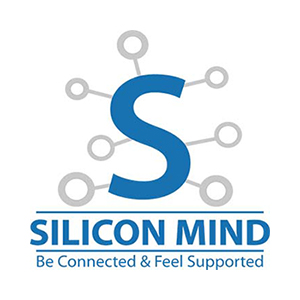Introduction to Cloud Migration Strategy
Navigating the vast landscape of cloud migration can be a daunting task for organizations looking to transition their operations smoothly and efficiently. Crafting a comprehensive cloud migration strategy is vital in ensuring a successful shift from on-premises infrastructure to the cloud.
By adopting a cloud migration strategy, organizations can optimize their IT infrastructure, streamline operations, enhance security measures, and improve overall business agility. It is essential to carefully plan and execute the migration strategy to minimize disruption and maximize the benefits of cloud technology.
This article serves as a roadmap, guiding businesses through the essential phases and considerations involved in developing a robust cloud migration strategy that optimizes IT infrastructure, enhances security, and boosts overall business agility.
Overview of Cloud Migration Strategy
Cloud migration strategy is a well-structured and planned approach to transition an organization’s on-premises infrastructure and applications to the cloud. It involves the careful assessment and evaluation of the current IT environment, followed by a comprehensive plan to migrate data and applications to the cloud. The strategy considers factors such as data security, compliance, scalability, and cost-efficiency.
By adopting a cloud migration strategy, businesses can enhance their agility, reduce operational costs, and improve overall efficiency. This approach allows organizations to take advantage of the benefits offered by cloud computing, such as scalability, flexibility, and ease of maintenance. A successful cloud migration strategy ensures a smooth transition, minimizes disruption, and maximizes the advantages of cloud technology.
Importance of a Comprehensive Approach
A comprehensive approach to cloud migration strategy is crucial for the success of any organization’s move to the cloud. By taking a comprehensive approach, businesses can effectively evaluate their current infrastructure and applications, set clear objectives and goals, and create a detailed migration plan. This ensures that all aspects of the migration process are carefully planned and executed, resulting in a smooth transition to the cloud.
Moreover, a comprehensive approach allows organizations to address potential challenges and mitigate risks before they impact the business. It helps in identifying dependencies, ensuring data security and compliance, and conducting thorough testing and validation.
Additionally, by providing post-migration support and continuous monitoring, organizations can promptly address any issues and ensure the optimal functioning of their cloud environment. A comprehensive approach minimizes disruption, maximizes the benefits of cloud computing, and sets the foundation for future growth and innovation.
Assessment Phase
Evaluating Current Infrastructure and Applications
In the assessment phase of the cloud migration strategy, organizations begin by evaluating their current infrastructure and applications. This evaluation process involves a comprehensive analysis of the existing systems to understand their capabilities, dependencies, and limitations. By examining the infrastructure and applications, organizations can determine their readiness for migration and identify any potential challenges or areas that need improvement.
During this evaluation, organizations gather essential information such as hardware specifications, software versions, and network configurations. They also assess compatibility issues, performance metrics, and any dependencies that exist between different applications and systems. This evaluation helps in identifying which workloads or data sets are suitable for migration and prioritizing them accordingly.
Furthermore, the evaluation phase helps organizations determine if any modifications or upgrades are required before migrating to the cloud. By thoroughly assessing the current infrastructure and applications, organizations can make informed decisions and lay the groundwork for a successful migration journey.
Setting Clear Objectives and Goals
During the assessment phase of the cloud migration strategy, it is essential for organizations to set clear objectives and goals. This involves defining what the organization hopes to achieve through the migration process. Whether the objective is to improve scalability, reduce costs, enhance performance, or increase data security, having clear goals helps align the migration efforts with the overall strategic vision.
Setting clear objectives and goals provides organizations with a roadmap for the migration process and helps in making informed decisions. It also allows for effective resource allocation and prioritization of tasks. By clearly defining the desired outcomes, organizations can ensure that the migration strategy is designed to address specific pain points and deliver tangible benefits.
Furthermore, having clearly defined objectives and goals also helps in measuring the success of the migration. It provides a benchmark against which the results can be evaluated, allowing organizations to gauge the effectiveness of the cloud migration strategy and make adjustments if needed. With clear objectives and goals in place, organizations can approach the cloud migration process with confidence and clarity.
Planning and Preparation
Creating a Detailed Migration Plan
Creating a detailed migration plan is a crucial step in the cloud migration strategy. It involves mapping out the entire process, from start to finish, and ensuring that all necessary tasks and dependencies are accounted for. The plan should outline the specific applications, systems, and data that will be migrated, along with the sequence and timeline for each migration step.
During this phase, it is important to identify any potential risks or challenges that may arise and have contingency plans in place to address them. This includes addressing security vulnerabilities, data loss risks, and potential disruptions to business operations. Additionally, the plan should include a clear communication strategy to keep stakeholders informed about the progress and any potential impact on their operations.
By creating a detailed migration plan, organizations can ensure a smooth and successful transition to the cloud, minimizing any potential disruption to business operations.
Establishing Timeline and Budget
Establishing a clear timeline and budget is a critical step in the cloud migration strategy. Organizations must accurately determine the time required for each migration phase, taking into account the complexity of the applications and data being migrated. By outlining a detailed timeline, stakeholders can ensure that all tasks are completed within the expected timeframe, minimizing any potential disruptions to business operations.
Budgeting is also crucial in order to allocate the necessary resources for the migration project. This includes not only the costs associated with cloud services and infrastructure but also expenses for any additional tools, training, and support required throughout the process. By establishing a well-defined budget, organizations can control costs and maintain financial transparency while ensuring a successful migration to the cloud.
Table 1 provides an example of establishing a cloud migration timeline and budget:
| Milestone | Timeframe | Budget Allocation |
| Assessment Phase | 2 weeks | $10,000 |
| Planning and Preparation | 4 weeks | $20,000 |
| Data Migration Process | 6 weeks | $30,000 |
| Testing and Validation | 2 weeks | $15,000 |
| Go-Live and Post-Migration Support | 2 weeks | $10,000 |
| Total | 16 weeks (4 months) | $85,000 |
By following a well-planned timeline and budget, organizations can ensure a smooth and efficient cloud migration process.

At Silicon Mind, we specialize in providing comprehensive cloud solutions and expertise to guide businesses on the roadmap to a successful cloud migration strategy. With deep industry knowledge and a proven track record, our skilled professionals seamlessly transition organizations to the cloud, optimizing performance, scalability, and security. We navigate the complexities of cloud migration, leveraging industry best practices and cutting-edge technologies, while offering ongoing support and maintenance services to ensure long-term success. Trust Silicon Mind to be your trusted partner in harnessing the power of the cloud for your business’s growth and innovation. Contact us today to embark on a seamless cloud migration journey.
Data Migration Process
The data migration process is a crucial step in the cloud migration strategy, as it involves transferring and adapting data from on-premises systems to the cloud environment. To ensure a successful data migration, organizations need to follow a systematic approach.
Data Classification and Prioritization
During the data migration process, it is essential to classify and prioritize data based on its importance and criticality. By categorizing data into different classes, organizations can determine the order in which it should be migrated. This classification process helps in effectively managing and allocating resources for the migration.
To classify data, organizations can consider factors such as data sensitivity, business impact, and compliance requirements. By doing so, they can identify high-priority data that needs to be migrated first, such as customer data or critical business applications. Conversely, low-priority data, such as outdated or redundant information, can be migrated later or even eliminated altogether.
By prioritizing data migration, organizations can ensure that the most critical information is readily available in the cloud, minimizing any disruptions to business operations and enabling a smooth transition.
Ensuring Data Security and Compliance
During the data migration process, ensuring data security and compliance is of utmost importance. Organizations must take necessary measures to protect their data and adhere to regulatory requirements. This can be achieved by implementing robust security protocols, such as encryption and access controls, to safeguard data during transit and storage in the cloud. Additionally, organizations should conduct regular audits and assessments to ensure that their cloud service providers are compliant with relevant industry standards and regulations.
It is crucial to select a cloud service provider that offers strong security measures, data backup, and disaster recovery capabilities. By partnering with a trusted provider, organizations can have confidence in the security of their data throughout the migration process. Compliance with regulations such as GDPR or HIPAA must also be considered, and appropriate measures should be taken to meet these compliance requirements. Prior to migration, organizations should review and update their data governance policies and procedures to ensure alignment with applicable regulations and standards.
Overall, data security and compliance should be a top priority throughout the cloud migration process to protect sensitive information and maintain organizational trust.
Testing and Validation
Performing System Tests and Quality Assurance
During the testing and validation phase of a cloud migration, performing thorough system tests and quality assurance is crucial to ensure the smooth functioning and reliability of the migrated systems. System tests involve checking the functionality, performance, and security of the applications and infrastructure in the cloud environment. This includes testing for data integrity, network connectivity, and application compatibility. Quality assurance checks involve verifying that the migrated systems meet the desired performance standards and comply with any regulatory requirements. This phase helps identify any issues or gaps in the migration process and allows for necessary adjustments or fixes to be made before the final implementation. By conducting comprehensive system tests and quality assurance, organizations can ensure a successful and smooth transition to the cloud.
User Acceptance Testing and Feedback
User Acceptance Testing (UAT) is a crucial step in the cloud migration process that involves testing the system’s functionality and usability from an end-user perspective. This testing phase ensures that the migrated applications and infrastructure meet the requirements and expectations of the users. During UAT, a selected group of users or representatives from the organization tests the migrated systems and provides feedback on any issues or improvements. This feedback is invaluable for making necessary adjustments and addressing any gaps before the final implementation. By involving end-users in the testing process, organizations can validate the success of the migration strategy and ensure a smooth transition to the cloud. This feedback also helps in improving user satisfaction and enhancing overall system performance.
Go-Live and Post-Migration Support
Executing Migration Plan
The execution of the migration plan is a crucial step in the cloud migration strategy. Once the plan has been created and the necessary preparations have been made, it’s time to put the plan into action. This involves moving the applications and infrastructure from the on-premises environment to the cloud environment.
During the execution phase, it is important to closely follow the migration plan and ensure that all steps are carried out effectively. This includes migrating the data, setting up the required infrastructure in the cloud, and configuring the applications to work seamlessly in the new environment.
It is essential to have a team of experienced professionals who can carefully execute the migration plan and address any issues or challenges that may arise during the process. Regular communication and coordination among the team members are key to ensuring a successful migration.
By effectively executing the migration plan, organizations can ensure a smooth transition to the cloud environment and minimize any disruptions to the business operations.
Providing Continuous Monitoring and Support
Once the cloud migration is complete, it is crucial to provide continuous monitoring and support to ensure the optimal performance of the migrated applications and infrastructure. Continuous monitoring allows organizations to identify any issues or bottlenecks that may arise in the cloud environment and take immediate action to resolve them.
Monitoring tools and techniques, such as performance monitoring, log analysis, and capacity planning, should be utilized to track the health and performance of the cloud resources. This helps in identifying any potential problems before they impact the business operations.
Furthermore, offering post-migration support is essential to address any user queries or concerns and provide assistance with the new cloud environment. Proactive communication and prompt response to user feedback are crucial in ensuring a smooth and successful transition to the cloud.
By providing continuous monitoring and support, organizations can maximize the benefits of their cloud migration strategy and effectively manage their cloud infrastructure. It ensures that the migrated applications and data remain secure, perform optimally, and meet the organization’s goals and objectives.
Conclusion
While the technical aspects of cloud migration are crucial, a successful journey extends beyond the migration itself. This strategic shift unlocks a treasure trove of opportunities for businesses to innovate, scale, and optimize. By leveraging the inherent agility and flexibility of the cloud, organizations can streamline operations, accelerate time-to-market, and empower employees with the latest tools and technologies.
The true power of cloud migration lies in its ability to transform how businesses operate. It’s not just about moving data and applications; it’s about embracing a new paradigm of innovation and continuous improvement. By establishing a culture of experimentation and fostering a cloud-centric mindset, organizations can unlock their full potential and thrive in today’s dynamic business landscape.
Read More


